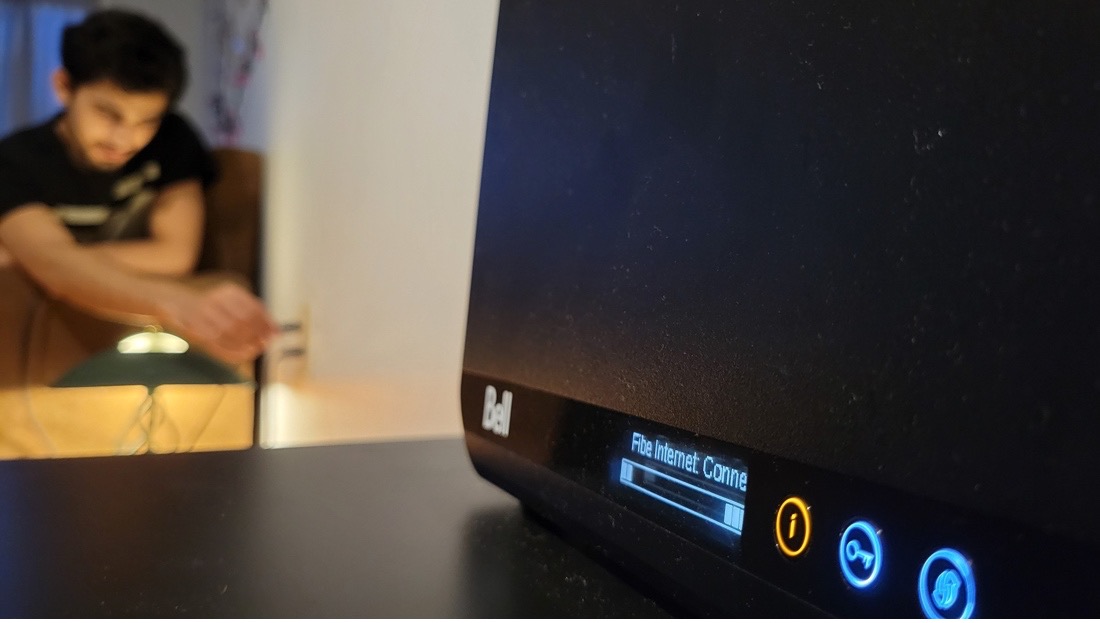Internet experts think 75 per cent of $193m project could be ‘wasted’
Only 25 per cent of households covered under initiative actually use internet

caption
The province gave $193 million to the Internet Funding Trust with an aim to make access to internet universal.A gap between access and actual use of the internet could still mean no high-speed service for most in the province under Develop Nova Scotia’s project, two experts on internet access suggest.
Auditor general Kim Adair’s report on Nov. 23 said that 42,263 homes had access to the internet because of Nova Scotia Internet Funding Trust’s efforts over the last two years. However, of that number, 10,825 homes, or only 25.16 per cent, have signed up for the services.
Those numbers don’t surprise Terry Dalton and Barry Gander, president and vice-president of i-Valley, a not-for-profit organization in charge of Canada’s largest municipal broadband build in Pictou County.
The organization had reached out to the government even before the trust was established to implement an accurate method of measuring consumer experience. The recommendations, aimed at minimizing the disconnect between people and the infrastructure, were never taken up. Related stories
Gander said the Internet Funding Trust is not viewed by the province as a community project.
“In a sense, 75 per cent of that $193 million will be wasted because people won’t connect with it,” he said, referring to the percentage of potential users who aren’t signing up for the service.
The Internet Funding Trust was established in 2018 to direct $193 million towards subsidizing internet service providers to put infrastructure in place. The project aims to achieve internet access for 99 per cent of Nova Scotians by the end of 2023.
The province relies on numbers from telecommunication companies to determine connectivity in the province. Gander said that the way the government measures internet coverage is wrong.
“They are just going out there mechanically making connections based on bad data and the connections have nothing to do with people’s actual need for access.”

caption
Barry Gander, vice-president and co-founder of i-Valley.A 2019 report by Wall Communications on telecommunications services in Canada shows that Canada had the second most expensive internet of the G7 countries for speeds over 41 mbps.
The study found that only the U.S. had higher rates. European rates are less than half of Canada’s.
Gander said that among other issues like internet literacy and awareness, the province must address whether people can afford the service.
“The large carriers have pretty much of a monopoly, they can raise the price to whatever they want,” Gander said.
Martin Wigginton, an Ardoise resident, felt relieved when the area got infrastructure for fibre internet this summer after 14 years due to Develop Nova Scotia’s efforts.
While the connection has been “world-changing” for Wigginton, who pays $100 a month for a one-gbps plan, he believes it might not be feasible for all.
“Those of us who have been willing to pay the money as high as it was to have whatever half-decent compared to dial-up that we could get, we were prepared to pay it. But not everyone is in that boat.”
Develop Nova Scotia laid out the internet initiative following the 2018 Brightstar report, which said “access to the Internet is essential to the province’s economic and social well-being.”
Dalton said that the Brightstar report underestimates the seriousness of the issue.
“Availability (of internet) does not mean that people are using it.”
Dalton’s group suggests the province take up Canadian Internet Registration Authority’s Internet Performance Test Data, which is independent and not run by telecommunication companies. I-Valley also recommends that the province provide income support and digital literacy education for seniors to increase community engagement.
Gander was present at the Nova Scotia legislature on Dec. 1 for a public accounts committee meeting on the recent auditor general’s report on COVID-19 and the internet. The committee ran out of time before it was able to discuss internet in Nova Scotia at length and decided to discuss it in the next meeting. Dalton and Gander hope to have a say next time.
In an email from Develop Nova Scotia, spokesperson Kelly Rose said the internet service providers do the marketing and outreach to potential customers in the project area.
“Having access to connections is the final stage in the process,” the email said.
Develop Nova Scotia did not respond to further questions on the gap between access and uptake.
About the author

Shlok Talati
Based in Toronto, Shlok Talati is a 2023 CBC News Donaldson Scholar with experience in radio and digital. He holds a master of journalism from...

B
Brian Olafson